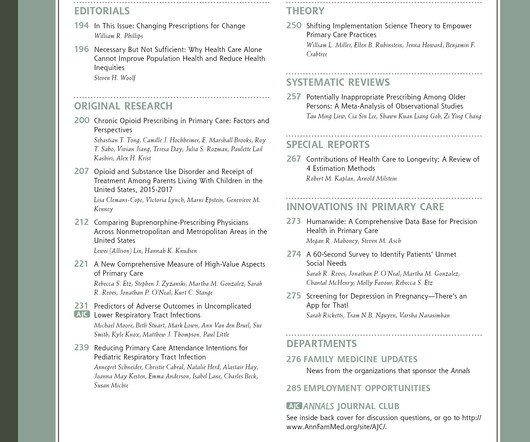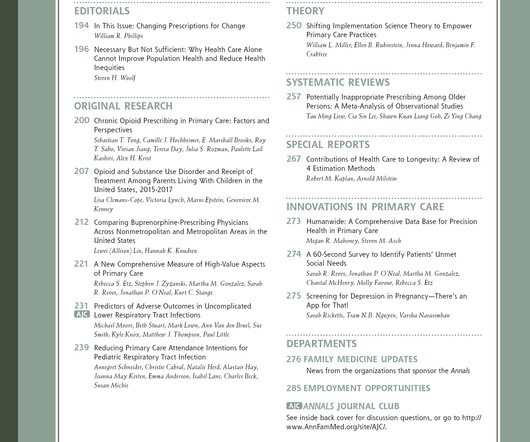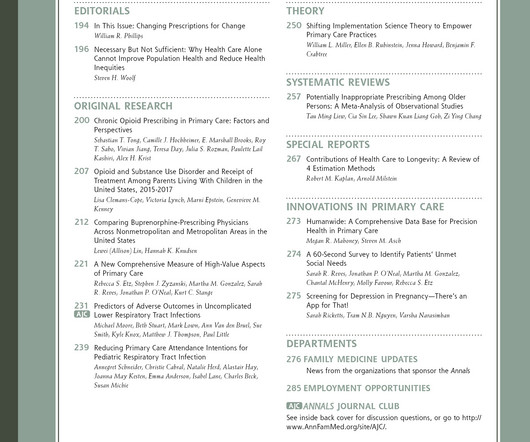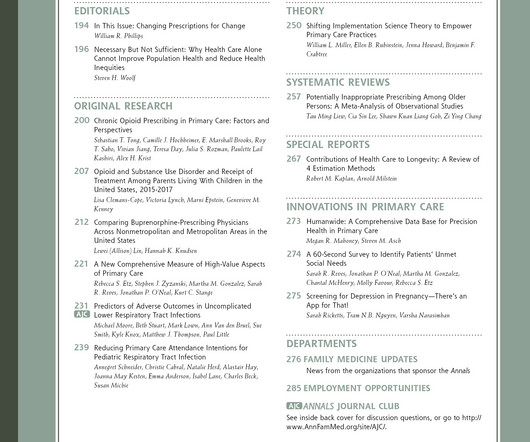Ambulatory Behavioral Health Referral Patterns in the Setting of Chronic Medical Conditions [Behavioral, psychosocial, and mental illness]
Annals of Family Medicine
NOVEMBER 20, 2024
Context: Patients with chronic medical conditions (CCs) and behavioral comorbidities have lower quality of life and increased healthcare expenses. Our work builds a foundation for cost-effective workflows to support patients with multimorbidity. Among the completed encounters, the average days from referral to encounter was 27.2.
















Let's personalize your content